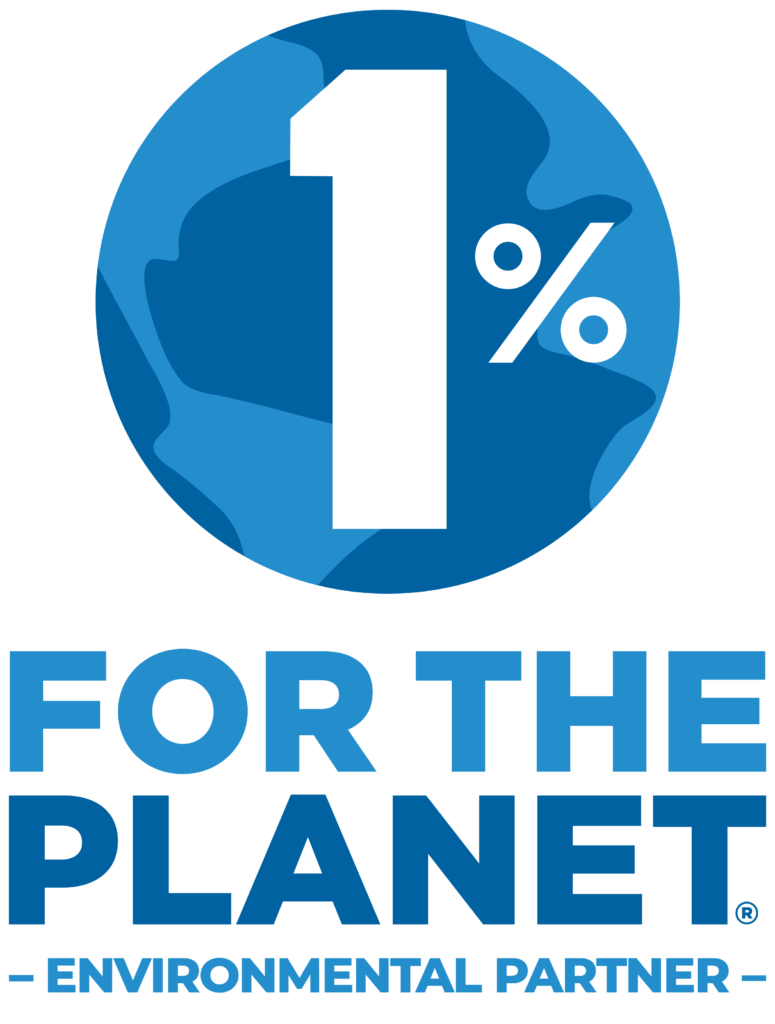“Although a variety of plant species can be used on a landfill surface, native plants are recommended … Native plants found in the surrounding natural areas will have the most chance of success, require the least maintenance, and are the most cost-effective in the long term. Ideally, revegetation of a site will create natural conditions that encourage re-population by native animal species that are consistent with the surrounding land. … [L]ocal wildlife, such as birds, may aid in the dispersion of appropriate plant species and in the overall revegetation of the site.”
— Revegetating Landfills and Waste Containment Areas Fact Sheet; United States Environmental Protection Agency, 2006
The site of this demonstration garden is a covered landfill, and because of this no irrigation system, trenched or above ground, is possible. So the native plant installations have been, and will be, selected with an eye to them being as drought-adapted and “bullet proof” as possible. Once established, these plants will require either very little volunteer hand watering or no supplemental watering at all.
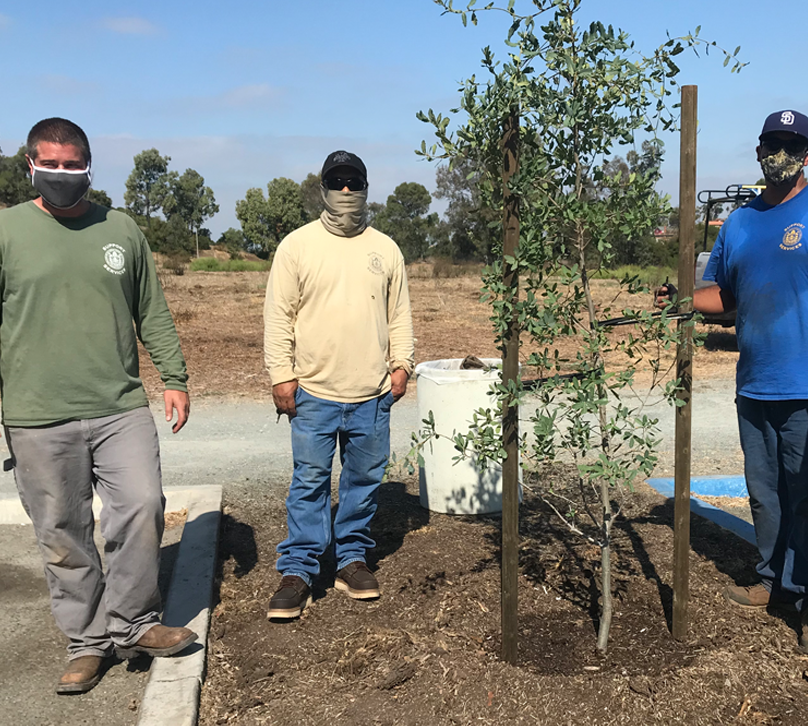
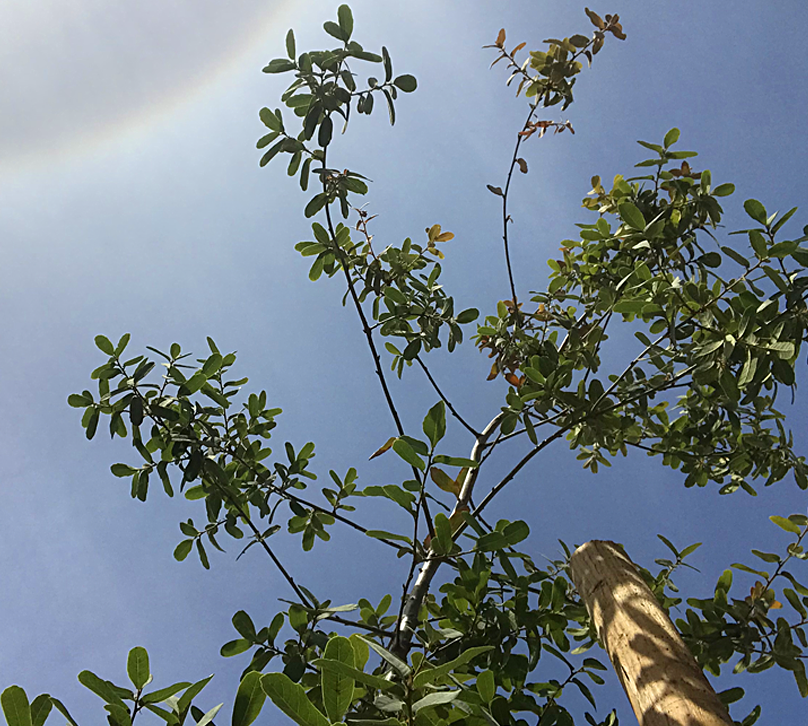
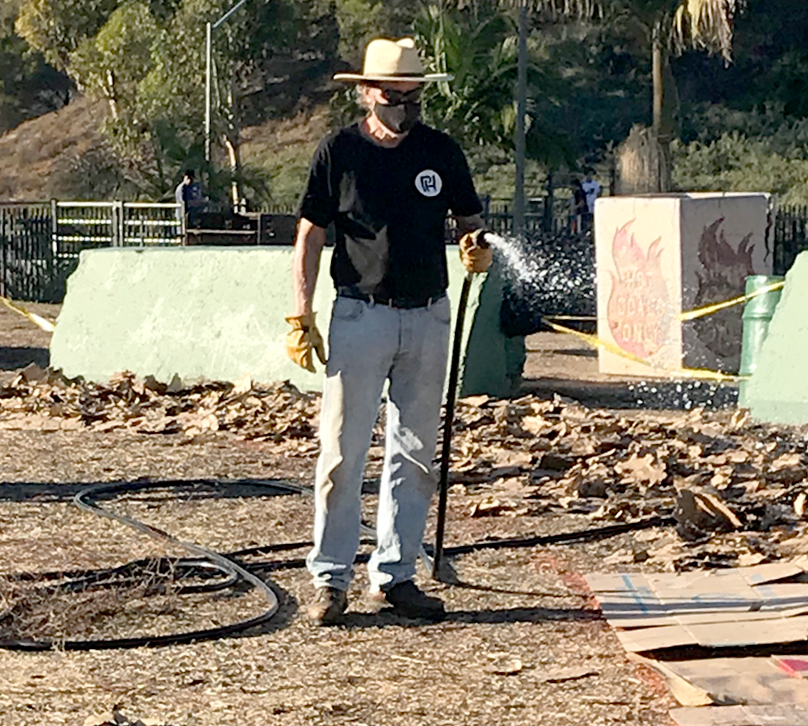
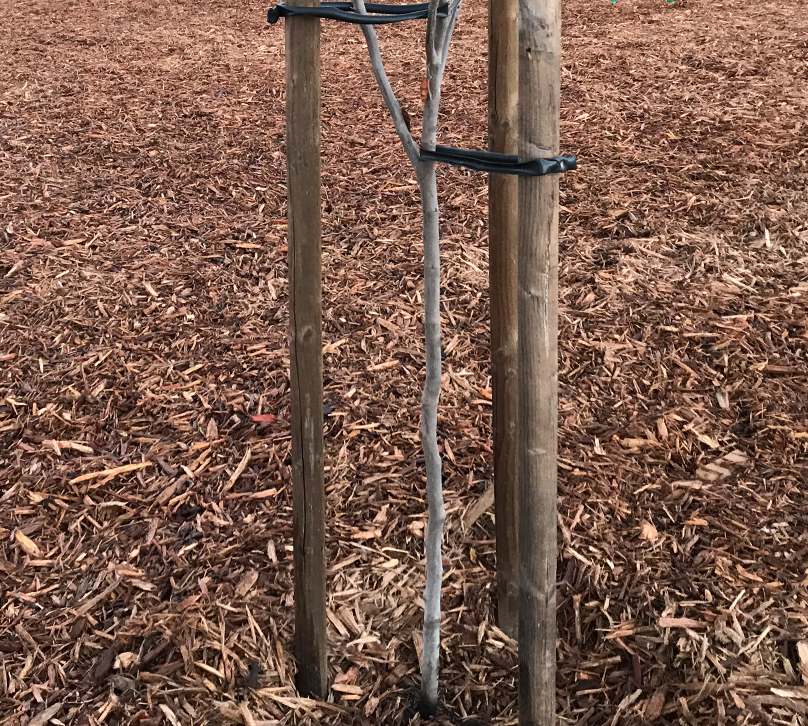
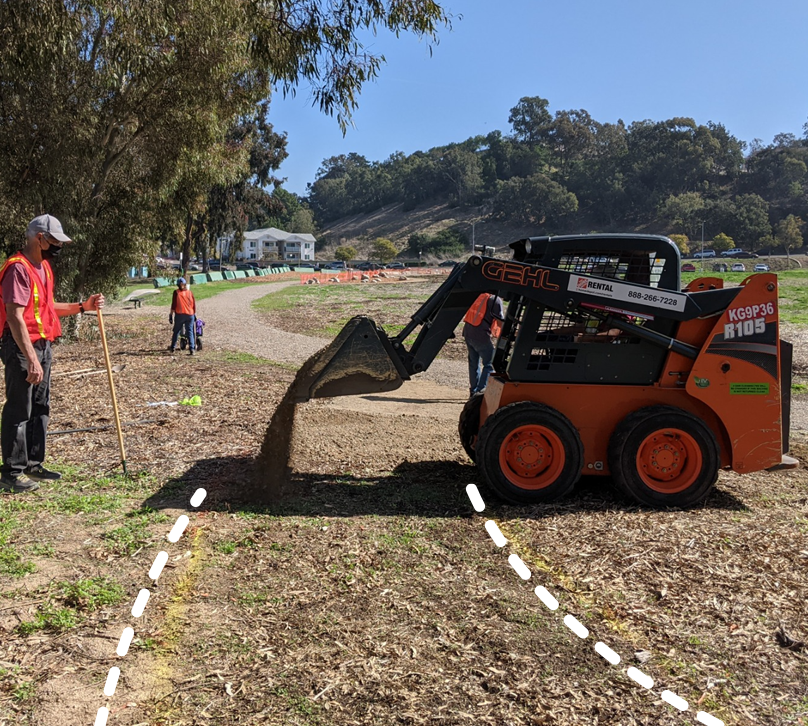
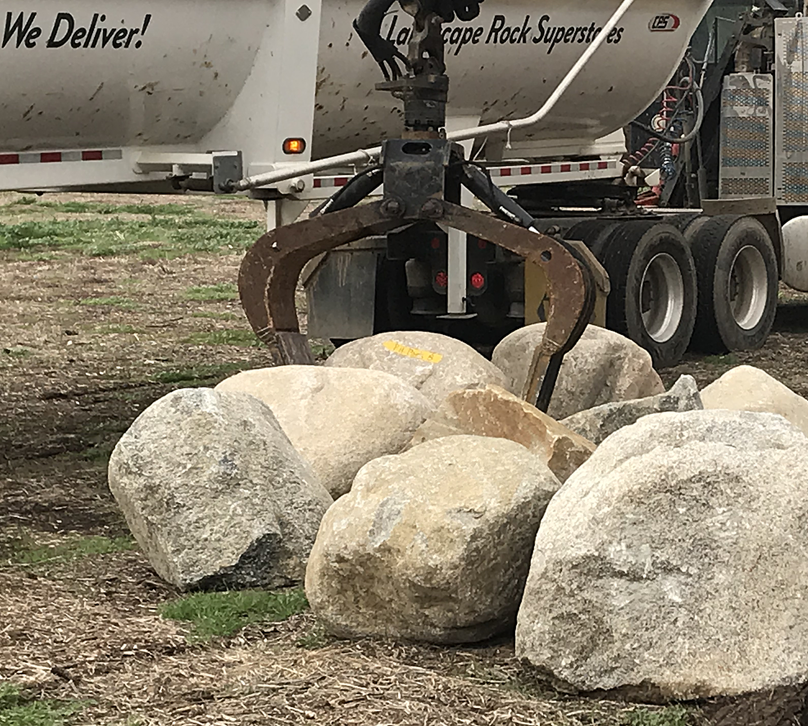
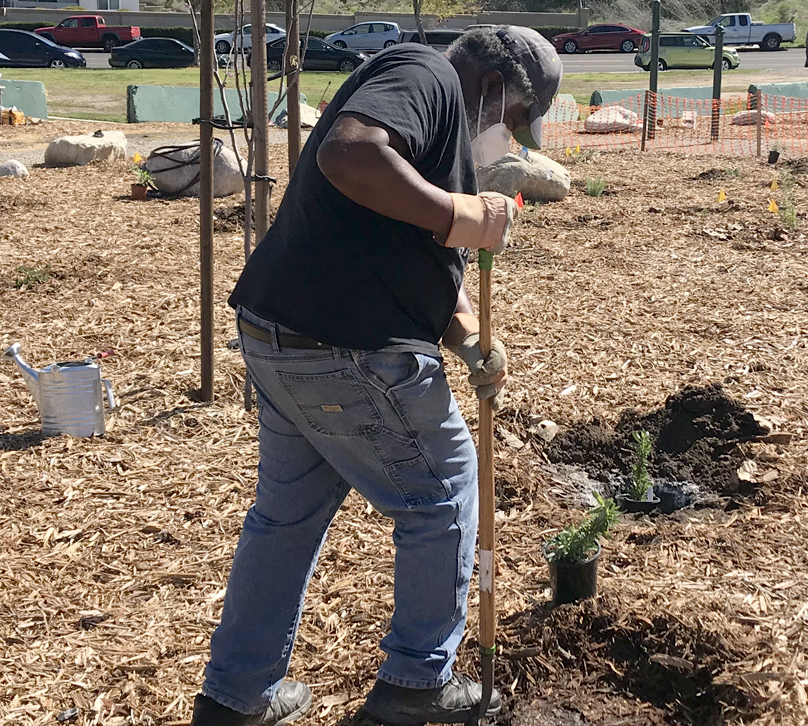
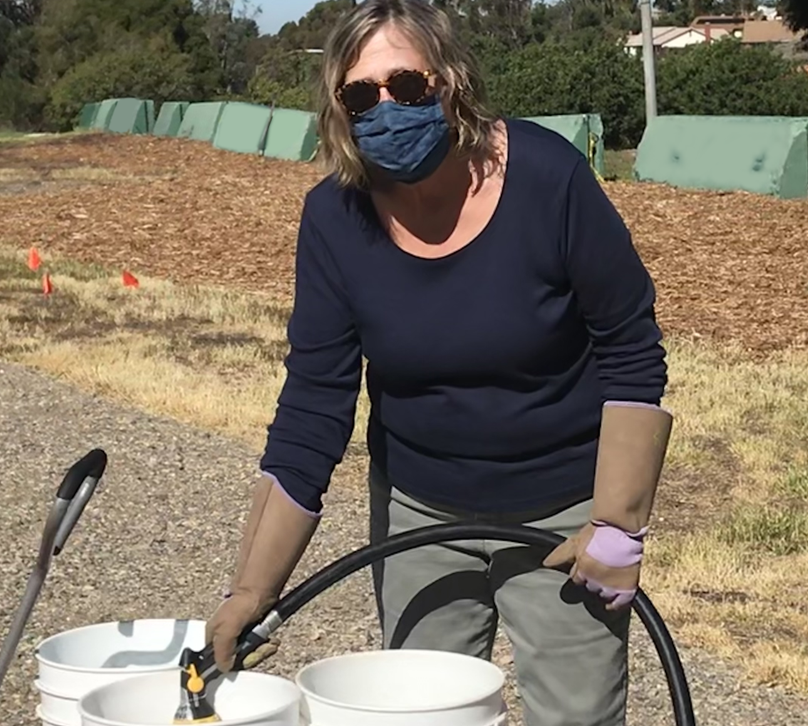
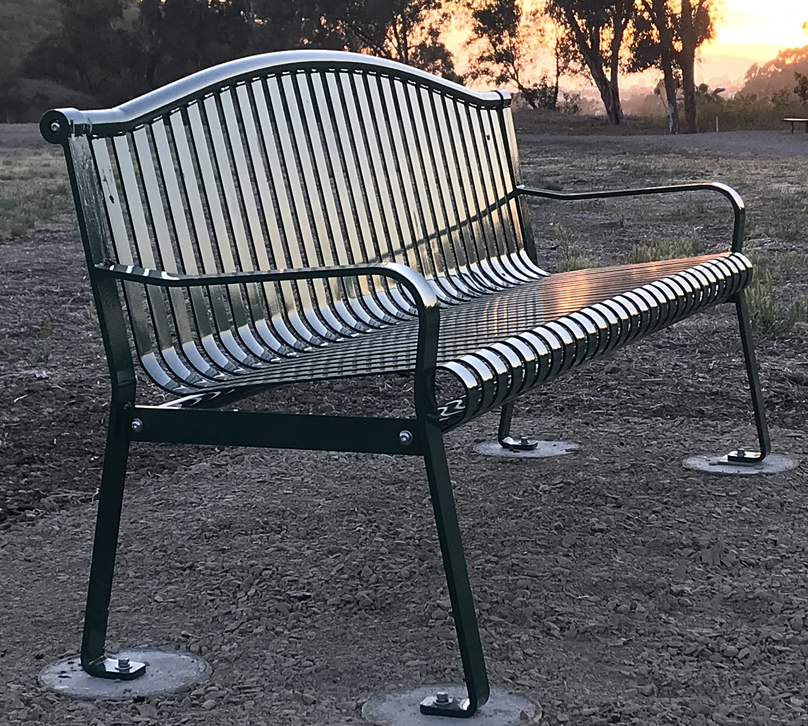
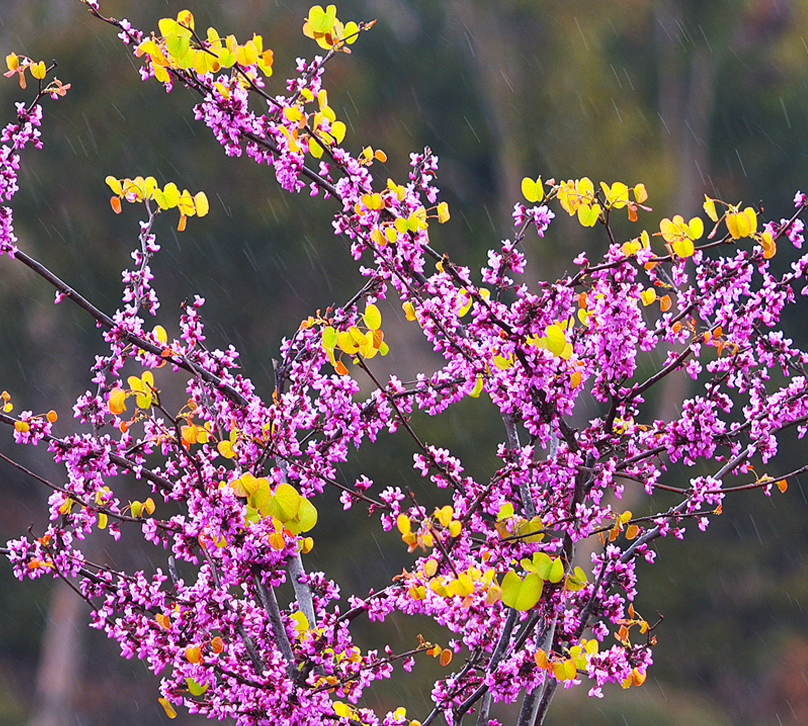
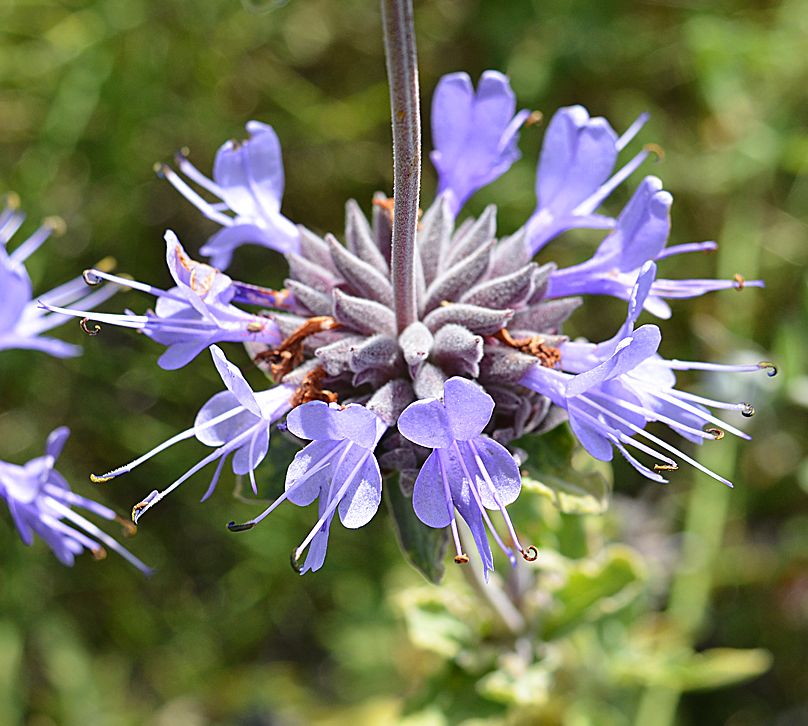
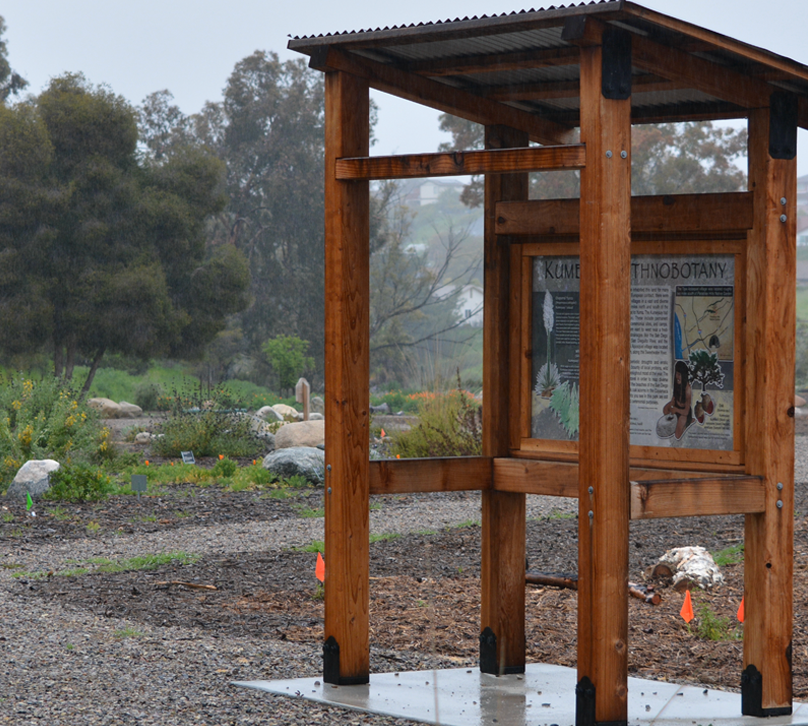
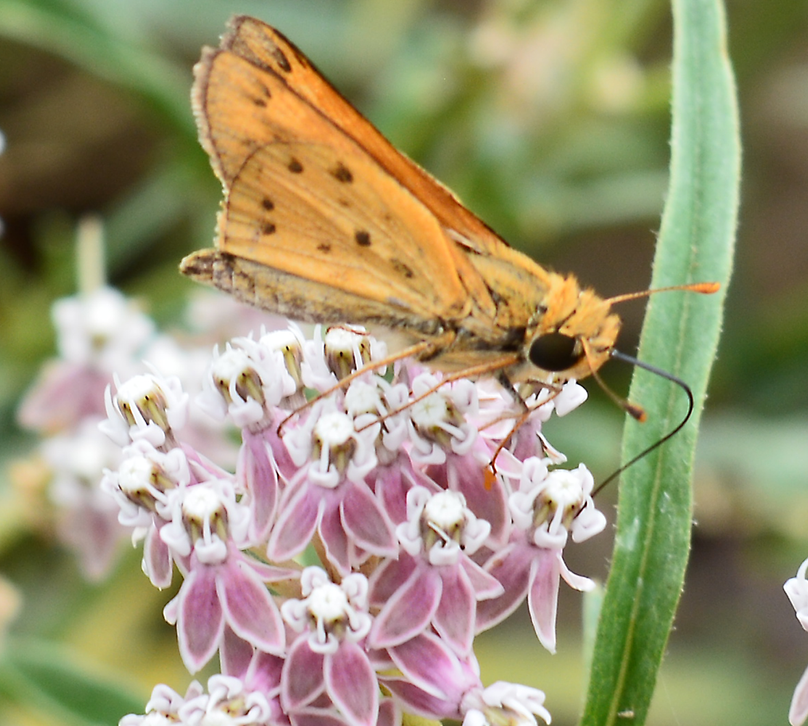

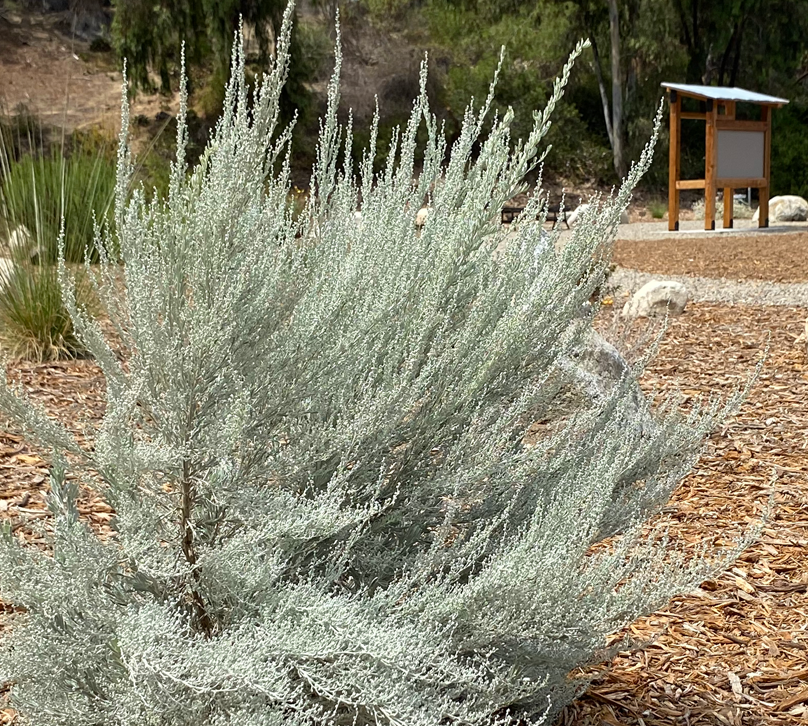
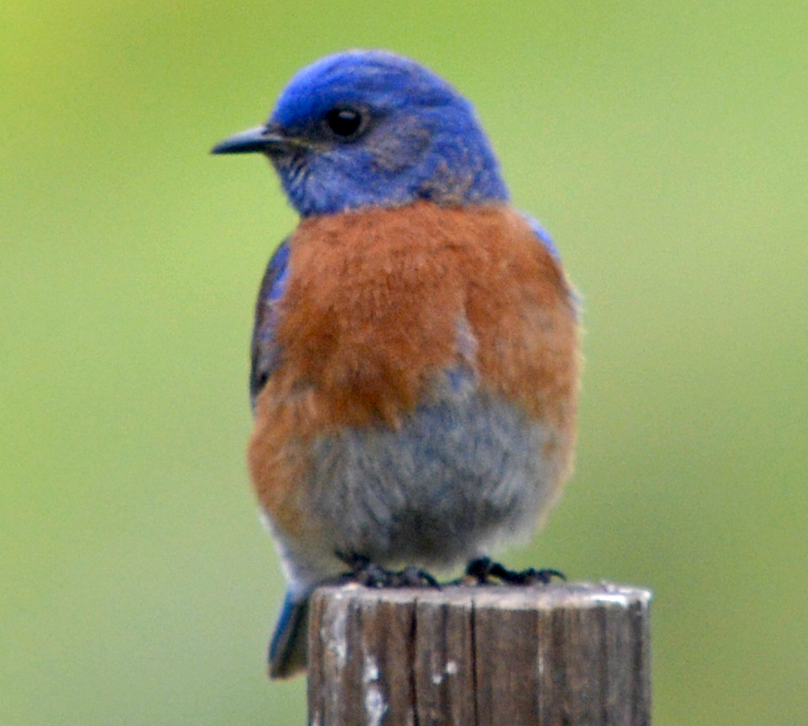
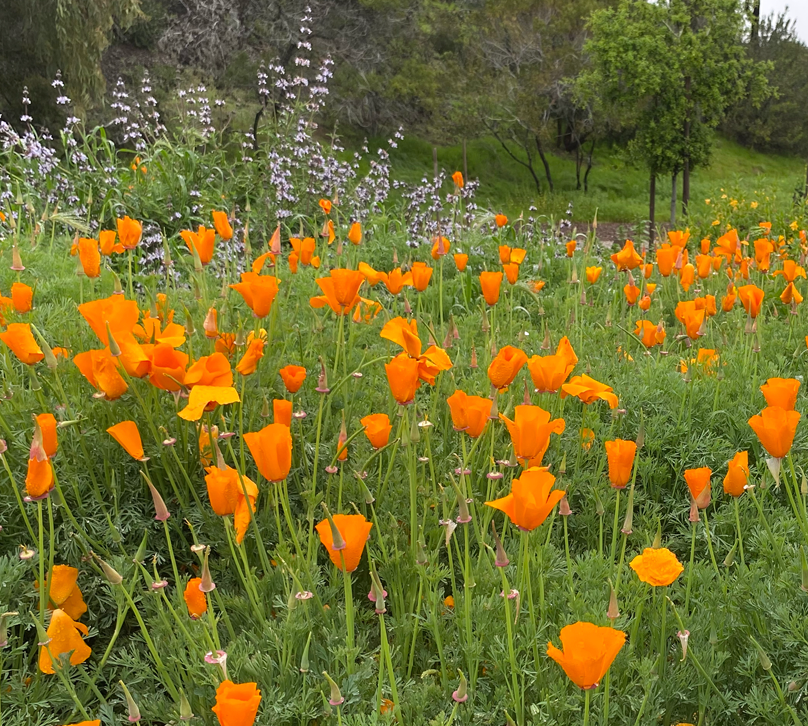
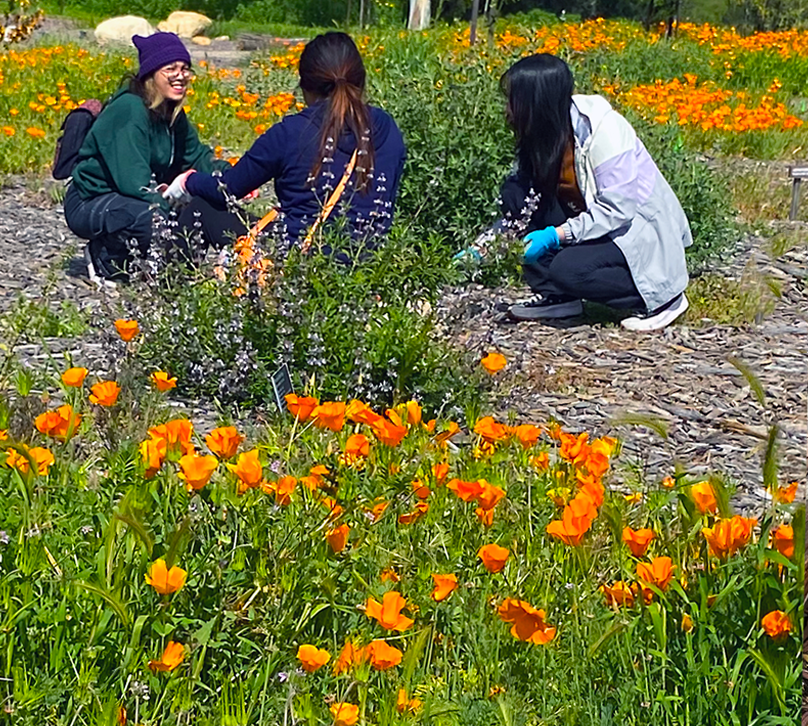
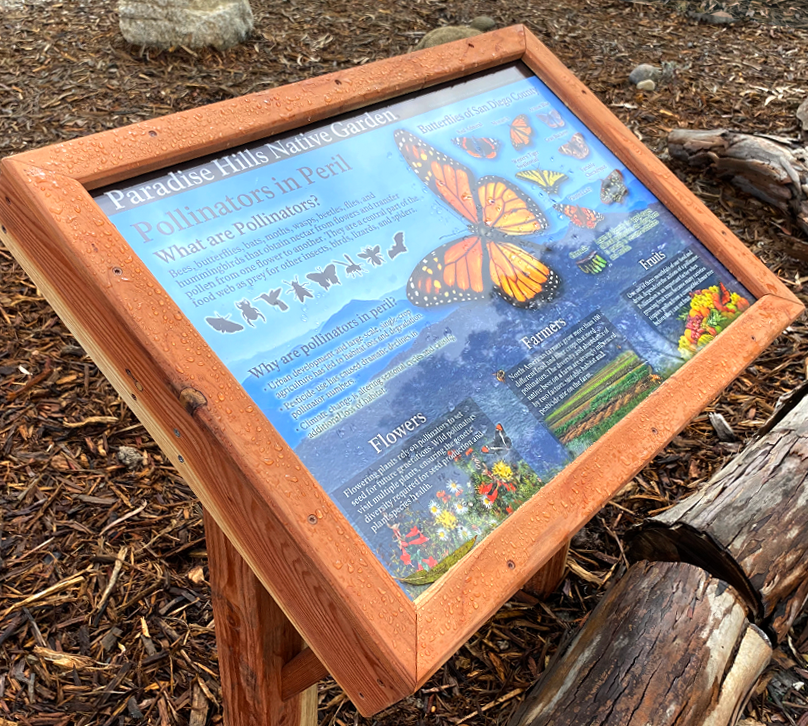
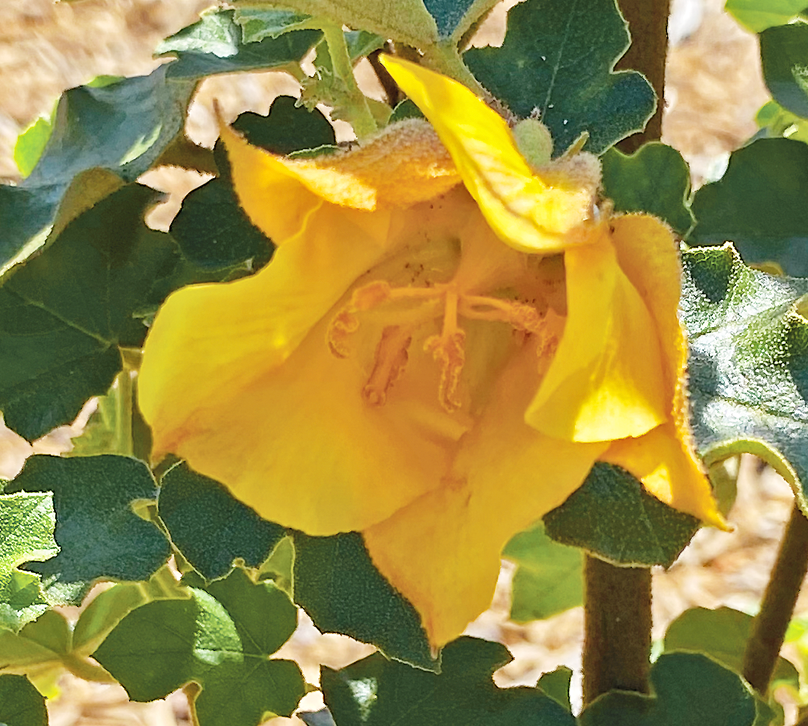
Much more work to be done, making a beautiful space even more beautiful. If you’d like to be part of this and other projects, please contact Paradise Gardeners.





